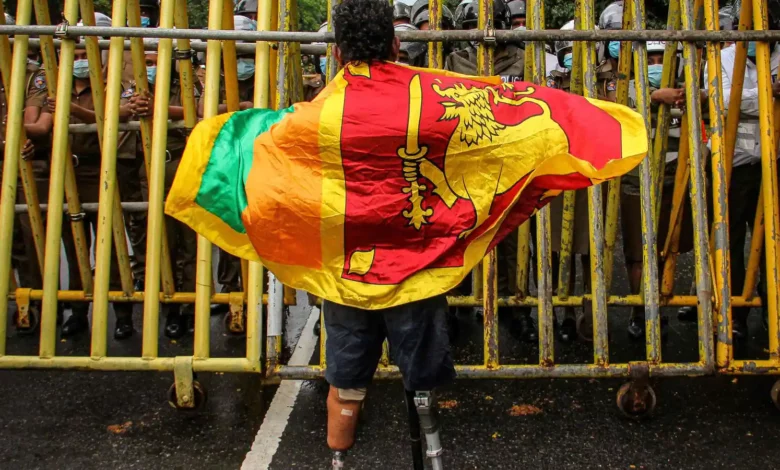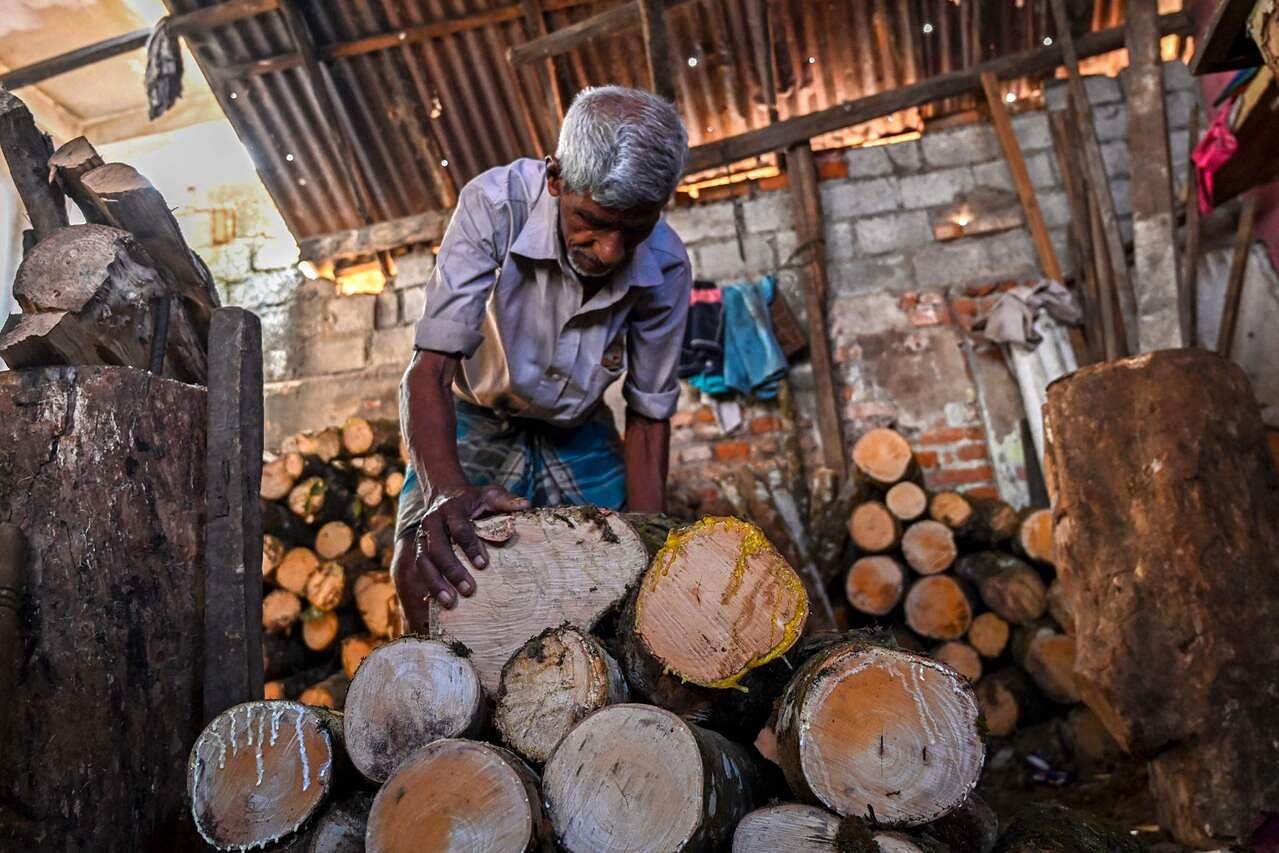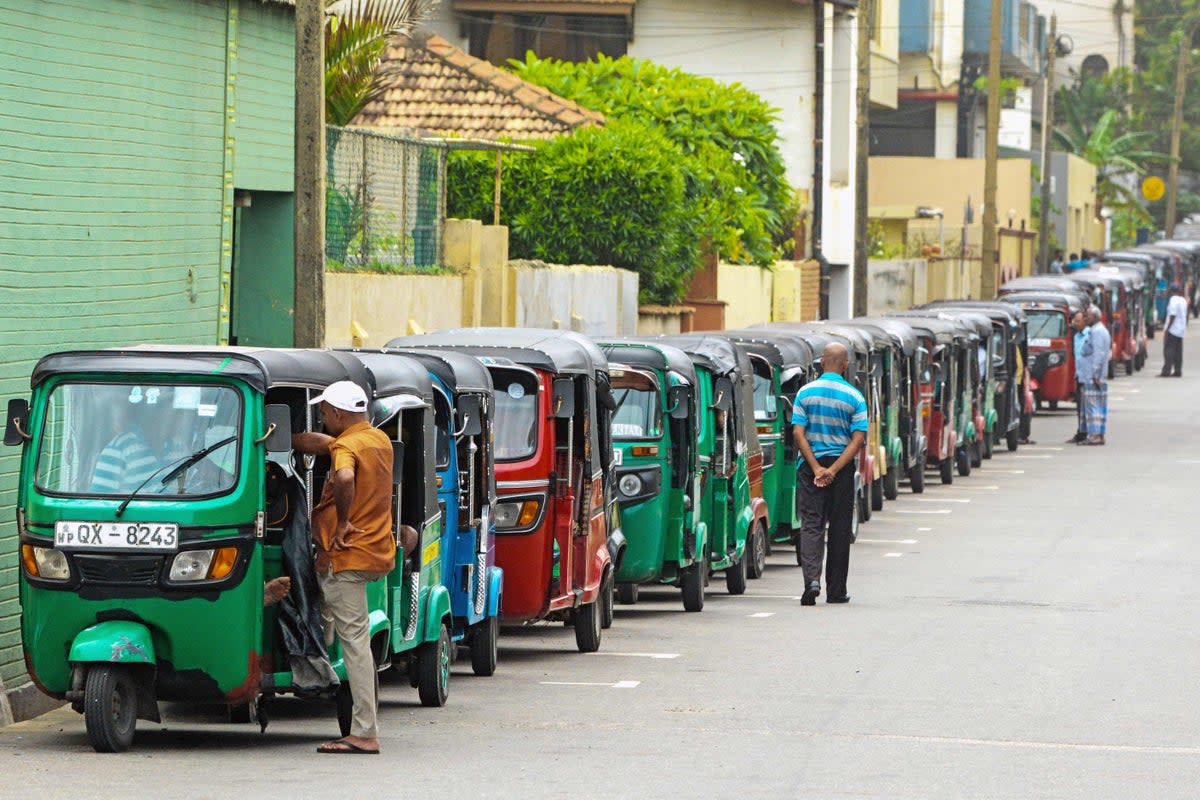Sri Lanka Aims to stop Money Printing as Inflation Nears 60%.

Sri Lanka Aims to stop Money Printing as Inflation Nears 60%.
Sri Lanka, which is printing rupees to pay for local salaries because it has run out of dollars to buy fuel, hopes to stop doing so in order to slow down Asia’s fastest inflation. Before a monetary policy review planned on Thursday, Prime Minister Ranil Wickremesinghe informed Parliament on Tuesday that the inflation rate is anticipated to hit 60 percent. The country is bankrupt, he continued, complicating negotiations for a rescue from the IMF.
Wickremesinghe has revised his original June deadline to an August staff-level agreement between Sri Lanka and the IMF. As a result of severe crop and crude oil shortages, consumer prices increased by 54.6 percent in June from a year earlier. Transport expenses increased by 128 percent from the previous week, and food prices increased by 80 percent.

The Central Bank of Sri Lanka is on pace to create more rupees this year despite the country’s economy contracting than it did in 2021, which is also driving up prices.
Due to a severe dollar shortage, the 22 million-person nation has been unable to pay for the import of fuel, fertilizer, medications, and other necessities like food.
With food prices increasing by 80% and transportation prices rising by 128% from the prior month due to severe crop and crude oil shortages, consumer prices increased by 54.6% from a year earlier in June.
The prime minister described a plan to bring the island in the Indian Ocean out of its predicament and stated that the administration wanted to receive permission for a four-year funding package following the recent visit by an IMF group.
The IMF stated last week that negotiations with Sri Lanka had been “constructive,” giving rise to optimism that it would soon give initial approval for a much-needed financial assistance package.
About the Economic Crisis in Sri Lanka

Although it has been in the process of building for some time, Sri Lanka’s economic catastrophe is not sudden; rating agencies have previously issued warnings about it. The severe tax cuts that Sri Lankan President Gotabaya Rajapaksa pledged during the 2019 elections have hastened the current economic crisis, resulting from financial mismanagement by previous governments. The inability of Sri Lanka to pay for essential imports, such as oil, has caused power outages that can last up to the time of 13 hours.
At the end of May, Sri Lanka’s foreign exchange reserves were just $1.92 billion, which included a swap capacity from the People’s Bank of China worth roughly $1.5 billion that is still mostly inaccessible due to circumstances.
2019 saw the Asian Development Bank refer to Sri Lanka as a “dual deficit economy.”
The report stated that “twin deficits signify that a country’s national expenditure surpasses its national revenue and that its production of marketable products and services is insufficient.”

Fitch reduced Sri Lanka’s sovereign rating from “CCC” to “CC” in December 2021. It said that given the country’s deteriorating external liquidity position, which a decline in foreign exchange reserves has highlighted, there was a higher likelihood of a default in the upcoming months.
Sri Lanka, which is printing rupees to pay for local salaries because it has run out of dollars to buy fuel, hopes to stop doing so in order to slow down Asia’s fastest inflation. Before a monetary policy review planned on Thursday, Prime Minister Ranil Wickremesinghe informed Parliament on Tuesday that the inflation rate is anticipated to hit 60 percent.
The country is bankrupt, he continued, complicating negotiations for a rescue from the IMF. Wickremesinghe has revised his original June deadline to an August staff-level agreement between Sri Lanka and the IMF.
As a result of severe crop and crude oil shortages, consumer prices increased by 54.6 percent in June from a year earlier. Transport expenses increased by 128 percent compared to the previous week, and food prices increased by 80 percent. The Central Bank of Sri Lanka is on pace to create more rupees this year despite the country’s economy contracting than it did in 2021, which is also driving up prices.
According to Prime Minister Ranil Wickremesinghe, who spoke to parliament on Tuesday, Sri Lanka is bankrupt, and the excruciating pain of its unprecedented economic crisis will last through at least the end of next year. The 22 million residents of the island nation have had to put up with months of soaring prices and protracted power outages because the government is running out of foreign exchange to purchase necessities. According to Wickremesinghe, the once-prosperous nation will experience a severe downturn this year, and severe shortages of food, gasoline, and medical supplies will persist.
As the nation battles to pay for new fuel imports, officials extended a school closure this week, ordered government employees to work from home, and restricted fuel distribution to critical services. The premier acknowledged that issues would still exist in 2023. “This is the real deal. The situation is how it is.
He asserted that the conclusion of a debt restructuring program with creditors by August was essential to Sri Lanka’s ongoing bailout negotiations with the International Monetary Fund (IMF). Wickremesinghe stated, “We are currently taking part in the talks as a bankrupt nation.
“We must present a different plan on how we will be able to pay off our debt to them due to the bankruptcy that our nation is in. We can only come to an agreement after the IMF is pleased with that plan.
Before an agreement that was decided could be reached on a fund to handle the country’s balance of payments and salary crisis, the IMF stated last week that additional work was required to correct the nation’s finances and reduce its exploding fiscal imbalance. The administration of Sri Lanka has decided to shut down all non-essential government services in an effort to preserve fuel, as the country currently has nearly no gasoline.
According to estimates from the UN, approximately 80% of people miss meals in order to deal with food scarcity and record prices.

Stops printing money
Sri Lanka, which is printing rupees to pay for local salaries because it has run out of dollars to buy fuel, hopes to stop doing so in order to slow down Asia’s fastest inflation.
Before a review of the monetary policy is planned on Thursday, Wickremesinghe informed lawmakers Tuesday that the inflation rate could approach 60 percent. The country is bankrupt, he continued, complicating negotiations for a rescue from the IMF. Wickremesinghe has revised his original June deadline to an August staff-level agreement between Sri Lanka and the IMF.
Edited by Prakriti Arora





